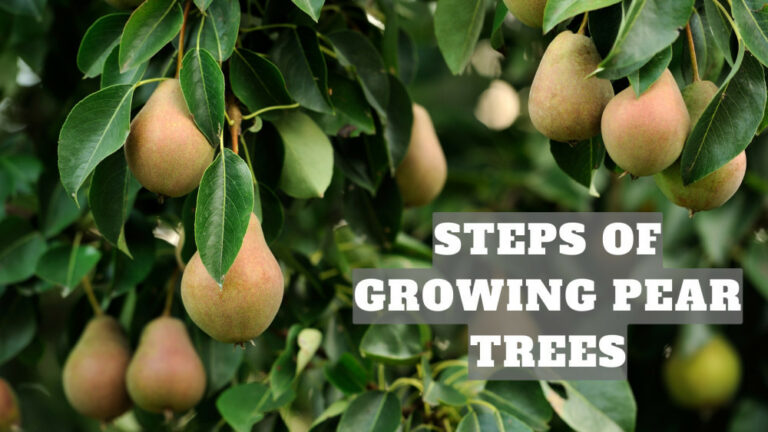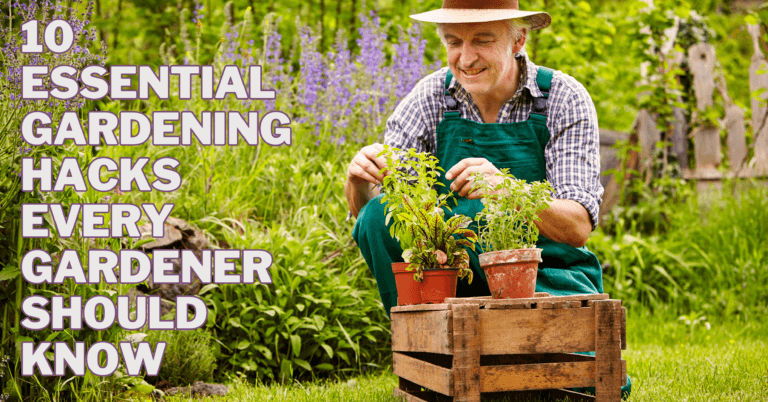Best Ways To Grow Jackfruit From Seeds
Best Ways To Grow Jackfruit From Seeds: A Step-By-Step Guide
Have you ever wondered how to grow jackfruit from seeds in your backyard?
Growing jackfruit from seed can be an incredibly rewarding experience. It offers the satisfaction of nurturing a plant from its infancy and the promise of harvesting your delicious, tropical fruit.
This guide will take you through each step, from selecting the right jackfruit seeds to harvesting mature fruit.
Whether you're a seasoned gardener or a beginner, our step-by-step process will help you cultivate a thriving jackfruit tree, ensuring you enjoy the fruits of your labour for years.
Dive into this comprehensive guide and start your journey toward growing your jackfruit today.

Tips To Choose The Right Jackfruit Seeds
Growing jackfruit from seeds can be rewarding, offering the potential for a bountiful harvest of this versatile and nutritious fruit.
Selecting the right jackfruit seeds ensures healthy growth and a successful yield. Here are ten tips to help you choose the best jackfruit seeds for your garden.
1. Source Fresh Jackfruit Seeds
Fresh jackfruit seeds offer a higher germination rate compared to older ones. Obtaining seeds from a recently harvested jackfruit is essential when planning to grow jackfruit from seed.
Seeds lose viability quickly, so planting them within a few days of extraction from the fruit increases the chances of successful germination. Dried seeds or those stored for a long time are less likely to germinate.
2. Select Mature Jackfruit Seeds
Select seeds from a fully ripened jackfruit. Immature seeds from an unripe fruit may not have developed fully and can struggle to germinate or produce a robust plant.
Look for seeds that have reached their full size and exhibit a firm texture, indicating they are mature and ready for planting. Healthy seeds are usually light brown and have a smooth surface.
3. Avoid Damaged Jackfruit Seeds
Inspect seeds closely for any signs of physical damage. Cracks, chips, or discolorations can indicate that the seeds are compromised.
Damaged seeds are more susceptible to diseases and may fail to germinate. Choose seeds that are intact, smooth, and uniformly coloured to ensure they are healthy and viable.
Discard any seeds that are cracked, shrivelled, or have holes, as these are less likely to germinate and grow into healthy plants.
4. Choose Viable Jackfruit Seeds
Perform a simple Water Test to test seed Viability by placing the jackfruit seeds in a water bowl. Viable seeds will sink, while non-viable ones will float.
Discard the floating seeds. This quick test helps you discard the seeds that are unlikely to germinate, allowing you to focus on those with the best potential to grow into strong jackfruit trees.
5. Ensure Proper Storage Of The Jackfruit Seeds
If immediate planting is not possible, store the jackfruit seeds correctly. Store them in a cool, dry place with airtightness to maintain viability.
Avoid exposing the jackfruit seeds to extreme temperatures or moisture, as these conditions can reduce their ability to germinate when planted.
6. Select Large Jackfruit Seeds
Larger jackfruit seeds often have more stored nutrients, which can support the seedling during its early stages of growth.
When planning to grow jackfruit from seeds, opt for the bigger seeds from the fruit. These are more likely to produce vigorous seedlings that can establish quickly and grow into healthy plants. Select seeds from a jackfruit known for its good taste, size, and health.
7. Check For Disease Resistance Of Jackfruit Trees
Whenever possible, source seeds from jackfruit trees known for their disease resistance. Seeds from such trees are likely to inherit these beneficial traits, providing a better chance of producing healthy plants that can withstand common diseases and pests, leading to a more successful harvest.
8. Consider The Jackfruit Seed Source
Seeds from reputable sources or nurseries are often more reliable than those from unknown origins.
Reputable suppliers are more likely to offer seeds that have been appropriately handled and stored, reducing the risk of poor germination.
Always inquire about the source and handling practices before purchasing seeds. This can increase the chances of your tree producing high-quality fruit.
9. Look For Proven Jackfruit Varieties
Some jackfruit varieties are known for their superior qualities, such as better taste, texture, or yield.
Research and choose seeds from proven varieties well-suited to your growing conditions. Selecting a suitable array can significantly impact the success of your jackfruit growing efforts.
10. Ensure Genetic Diversity Of The Jackfruit Seeds
Selecting jackfruit seeds from different fruits can promote genetic diversity for those growing multiple jackfruit trees.
The rich diversity can lead to a more robust and resilient population of jackfruit trees, capable of adapting to varying environmental conditions and reducing the risk of widespread disease.
To increase your chances of successful germination, plant several seeds. This compensates for the natural variability in seed viability.
Tips To Prepare Jackfruit Seeds For Planting
Before planting, jackfruit seeds must be prepared to sprout and develop into strong trees. Here are ten steps to help you prepare jackfruit seeds properly.
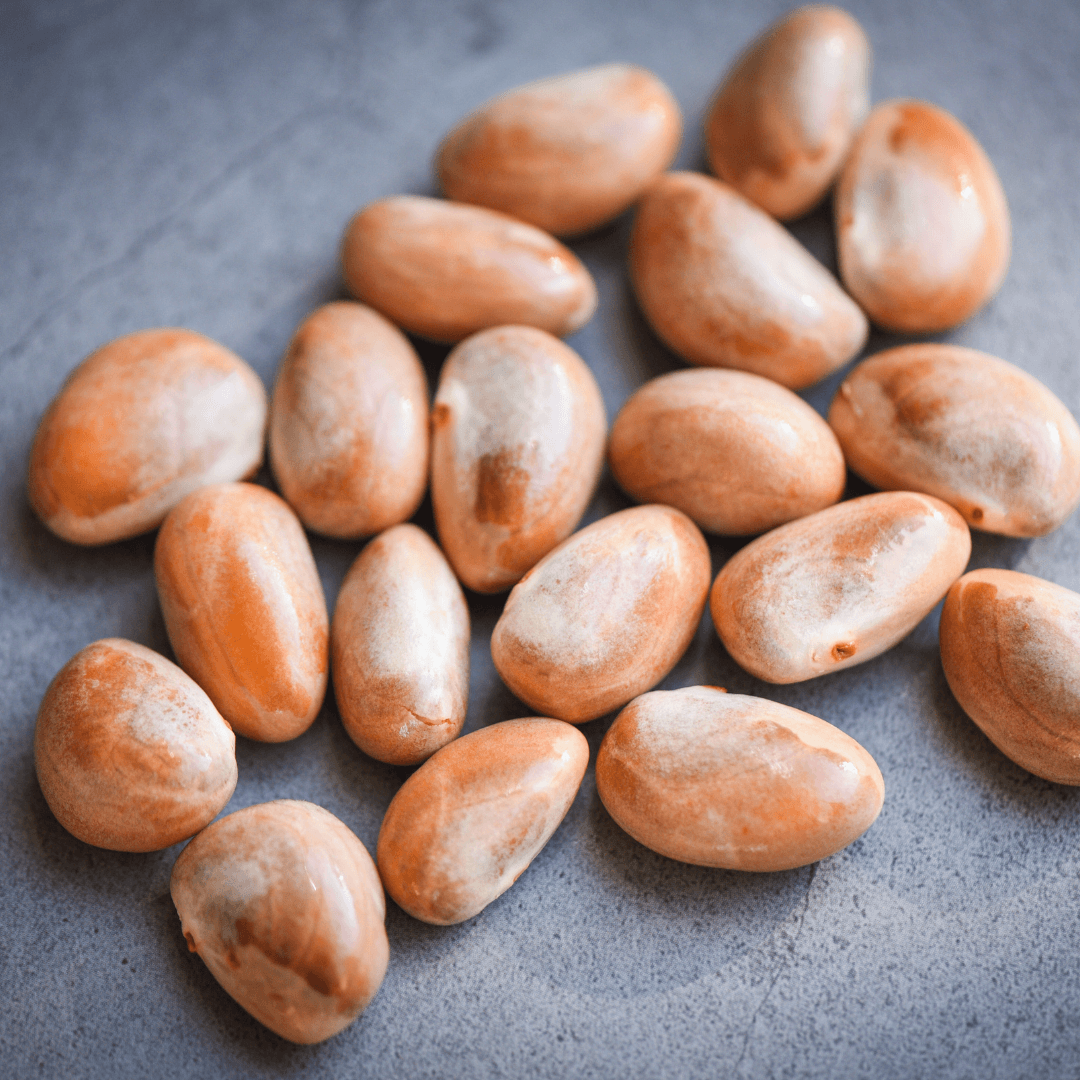
1. Extract Seeds From A Ripe Jackfruit
Begin by extracting seeds from a ripe jackfruit. Cut open the fruit and carefully remove the seeds, ensuring they are free from any fruit flesh.
The seeds should be plump and firm. Rinse them under running water to remove any remaining pulp, as leftover fruit material can encourage mould growth during drying.
2. Clean The Jackfruit Seeds Thoroughly
After rinsing, soak the seeds in a water bowl for a few hours. This soaking helps to loosen any stubborn bits of fruit flesh attached to the seeds.
After washing, gently scrub the seeds with a soft brush or fabric to ensure they are completely clean. Clean seeds are less likely to develop mould or attract pests.
3. Dry The Jackfruit Seeds Properly
Place the freshly cleaned seeds on a paper towel or a clean fabric and let them air dry for a few days.
Spread them out in a single layer to ensure even drying. Avoid direct sunlight exposure, as excessive heat can damage the seeds. Proper drying reduces the risk of fungal infections during storage and germination.
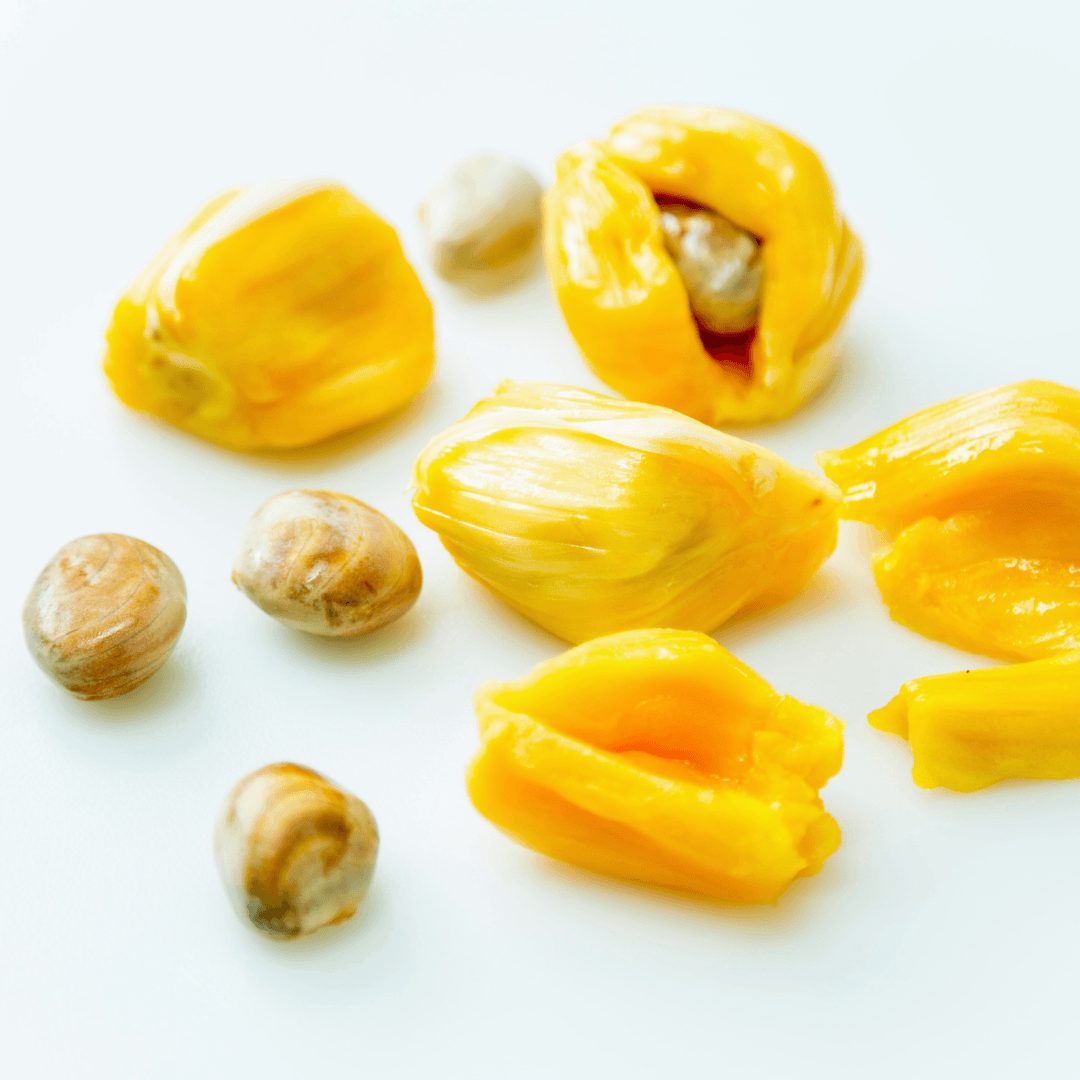
4. Test The Jackfruit Seed Viability
To ensure you are planting viable seeds, perform a float test. Place the seeds in a water bowl and sit for a few hours.
Viable and healthy seeds will sink to the bottom, while non-viable ones will float. Discard any floating seeds, as they are unlikely to germinate. This step helps in selecting the healthiest seeds for planting.

5. Pre-Soak The Jackfruit Seeds
Before planting, pre-soak the jackfruit seeds in water for 24 hours. This soaking softens the hard seed coat, making it easier for the seedling to emerge.
Use room temperature water and avoid soaking for longer than 24 hours, as prolonged soaking can cause the seeds to rot. Pre-soaking significantly improves the germination rate.
6. Prepare The Planting Medium To Germinate The Jackfruit Seeds
Choose a well-draining planting medium for germinating the seeds. A mix of equal parts sand, compost, and garden soil works well.
Ensure the medium is damp but not soggy. Fill portable pots or seed trays with the medium, leaving enough space for the seeds to be planted about 1 inch deep. A suitable medium supports healthy seedling growth.

7. Plant The Jackfruit Seeds Correctly
Plant the seeds at a depth of about 1 inch in the prepared planting medium. Place the seeds horizontally with the flatter side down, as this position supports better root development.
Lightly mask the seeds with soil and gently press them to ensure optimal seed-to-soil contact. Proper planting depth and orientation are crucial for successful germination.
8. Provide Adequate Watering For The Jackfruit Seeds
Water the planted seeds thoroughly immediately after planting. Ensure the soil stays consistently moist without becoming waterlogged throughout the germination period.
Overwatering can lead to seed rot, while underwatering can prevent germination. Using a spray bottle or gentle watering poth may avoid disturbing the seeds. Consistent moisture is critical to successful seedling emergence.
9. Maintain Optimal Temperature For The Jackfruit Seeds
Jackfruit seeds germinate best at temperatures between 75-85°F (24 and 29°C). To maintain the optimal temperature, place the pots or trays in a warm, sunny location or use a heating mat.
Consistent warmth speeds up germination and promotes healthy seedling growth. Avoid exposing the seeds to extreme temperature fluctuations, which can hinder germination.
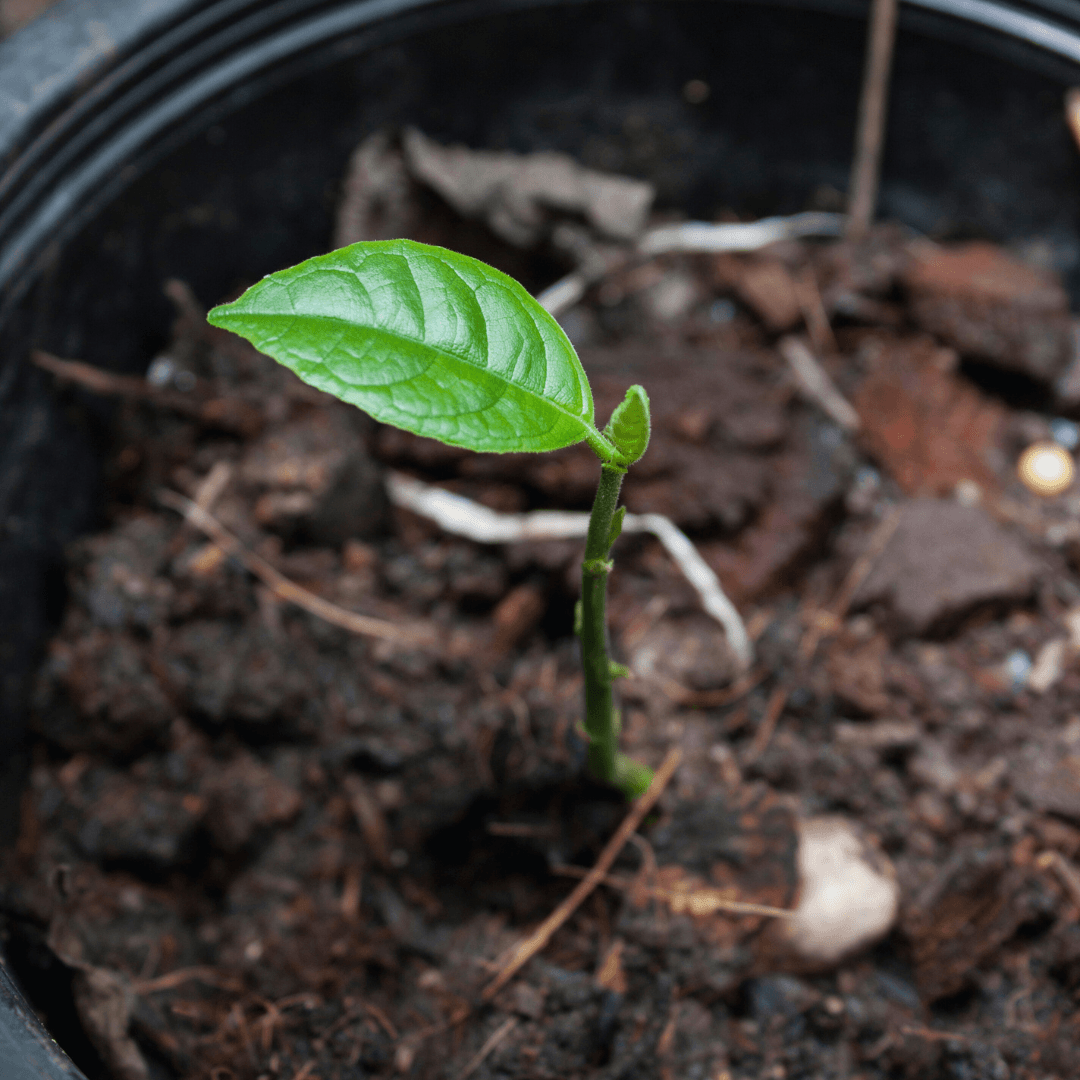
10. Monitor And Transplant The Jackfruit Seedlings
Germination can take 3-8 weeks. Monitor the jackfruit seeds regularly during this period, ensuring the soil remains moist.
Once the young jackfruit plants develop a few true leaves and reach a height of approximately 4-6 inches, they are ready for transplanting.
Move the jackfruit seedlings to larger pots or directly into the garden, ensuring plenty of growing space. Handle the seedlings cautiously to avoid damaging the delicate roots, which are crucial for their continued growth and health.
Grow Jackfruit From Seeds
Growing jackfruit from seeds is a rewarding process. Following these comprehensive steps, you can nurture the plant from a tiny seedling to a mature, fruit-bearing tree.

1. Germination Process Of Jackfruit Seeds
Start by extracting seeds from a ripe jackfruit. Clean the seeds thoroughly to rinse off any fruit residue, then soak them in water for 24 hours to soften the seed coat.
This pre-soaking step is crucial as it accelerates the germination process by allowing water to penetrate the seed coat more efficiently, encouraging the seed to sprout.
2. Choosing The Right Container For The Jackfruit Seedlings
Opt for a container with a depth of at least 12 inches to accommodate the jackfruit seedling's deep taproot.
Ensure the container possesses sufficient drainage apertures to avoid water accumulation, which may result in root decay.
Use a well-draining potting mix of equal parts compost, sand, and garden soil. This mixture creates the optimal environment for seed germination and growth, promoting healthy root development and preventing issues related to excess moisture.
3. Planting The Jackfruit Seeds
Sow the seeds approximately 1 inch beneath the soil surface in the chosen container. Place the seeds horizontally with the flatter side down to promote optimal root and shoot development.
Mask the seeds with a small layer of soil, then gently press down to ensure good contact between the seeds and the soil. This orientation helps the seedlings emerge properly from the soil.
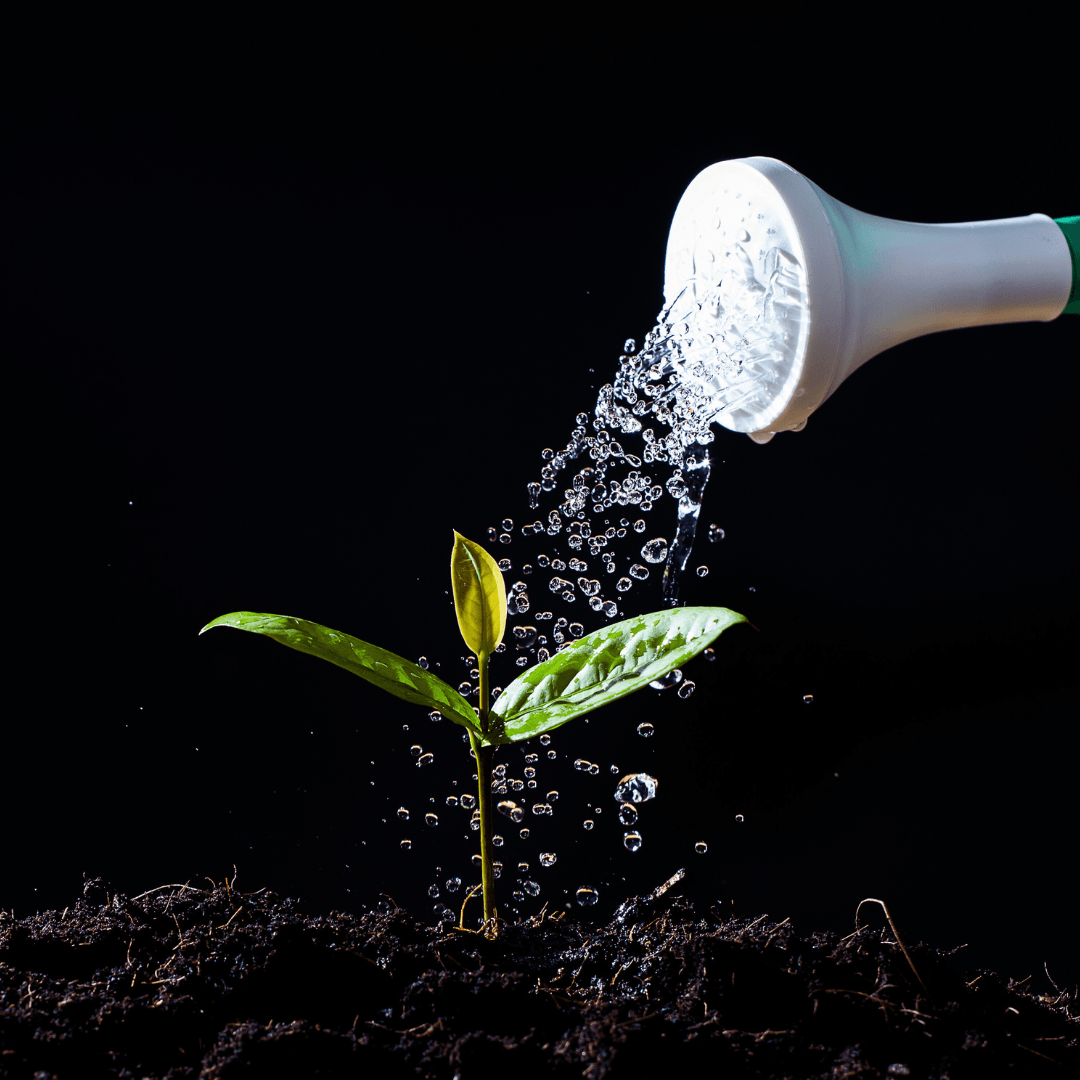
4. Watering And Care Of Jackfruit Seeds
After planting, water the seeds thoroughly. To prevent seed rot, maintain the soil consistently moist but not saturated.
Employ a spray bottle or a gentle watering can to avoid disturbing the seeds while ensuring adequate hydration.
Maintaining the proper moisture level is crucial during germination, as overwatering and underwatering can negatively impact the seeds.
5. Germination Timeline Of Jackfruit Seeds
Jackfruit seeds generally require 3 to 8 weeks to germinate, depending on the prevailing temperature and environmental conditions.
To facilitate quicker germination, maintain a warm environment, ideally between 75-85°F (24-29°C).
Regularly monitor the seeds and keep the soil moist, ensuring the conditions remain conducive to seed sprouting throughout this period.
6. Transplanting The Jackfruit Seedlings
When the seedlings are approximately 6-8 inches high and have developed a few true leaves, they are ready for transplanting.
Choose a sunny location with well-draining soil. To prepare the planting area, excavate a hole larger than the seedling's root ball to ensure the roots have ample space to grow. Handle the seedlings gently to avoid root damage.
7. Timing To Transplant Jackfruit Seedlings
The best time to transplant jackfruit seedlings is during the early part of the rainy season or spring.
These conditions provide the seedlings with plenty of natural water and a mild climate, helping them establish more quickly in their new environment. Avoid transplanting during extreme heat or dry conditions, which can stress the young plants.
8. Preparation Of The Jackfruit Seedlings
Before transplanting, acclimate the seedlings to outdoor conditions by gradually exposing them to sunlight over a week.
This process, known as hardening off, reduces transplant shock. Get the planting area ready by removing weeds and enriching the soil with compost.
Well-prepared soil provides a nutrient-rich environment, promoting robust root development and overall plant health.
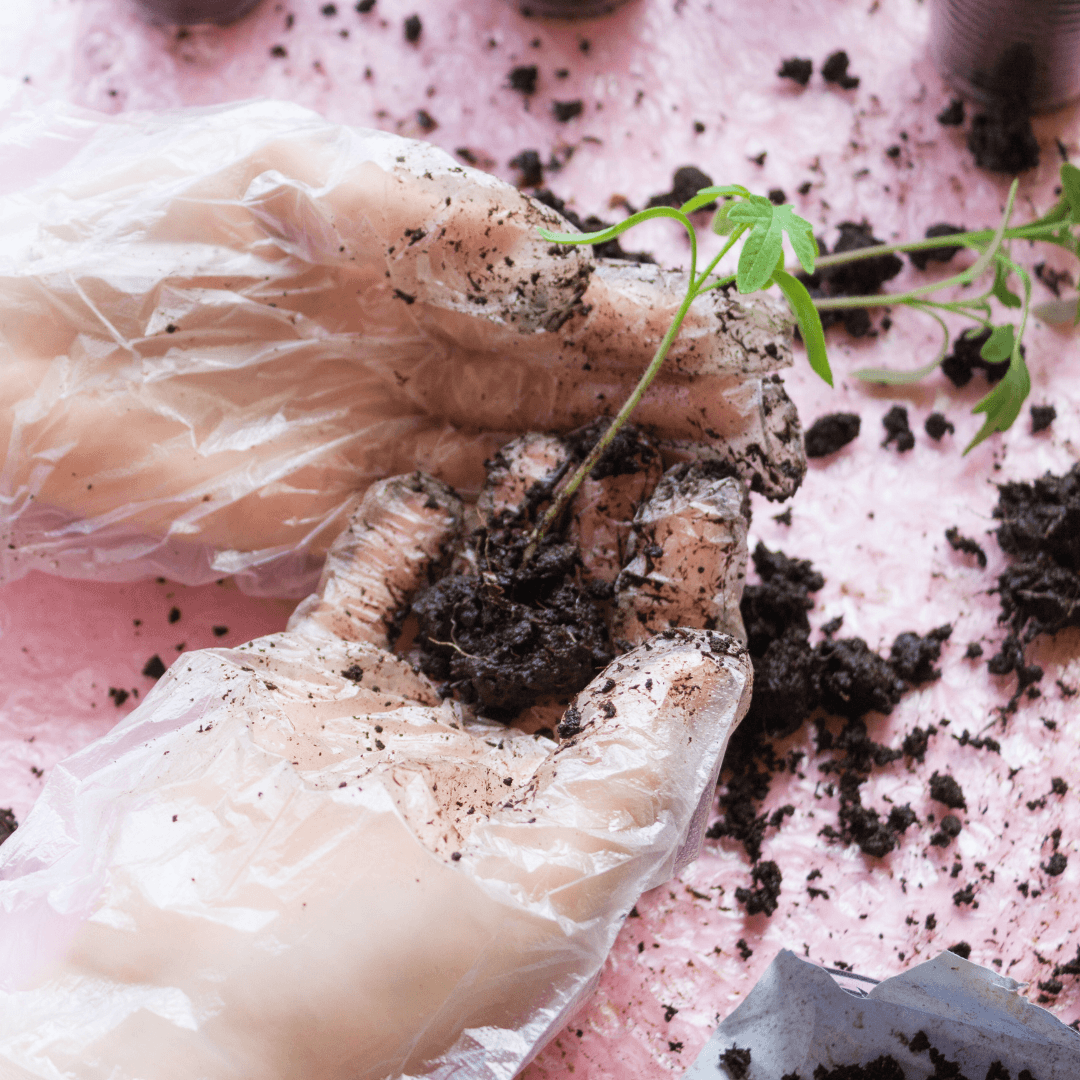
9. Transplanting Process Of The Jackfruit Seedlings
Gently remove the seedling from its container, keeping the root ball intact. Place it in the prepared hole, ensuring the seedling is at the same depth as in the container.
Fill the dug hole with soil and press it down lightly to remove air pockets. Thoroughly water the transplanted seedlings to aid in settling the soil around the roots and provide sufficient moisture for healthy root development.
10. Post-Transplant Care Of The Jackfruit Seedlings
After transplanting:
- Provide the seedlings with adequate water to keep the soil moist but not waterlogged.
- Mulch around the base of the plant to retain moisture and regulate soil temperature.
- To prevent damage, shield the young plants from strong winds and direct sunlight.
- Regularly check for signs of stress or pest infestation and take appropriate actions to address any issues.
11. Caring For The Jackfruit Tree
As the jackfruit tree grows, ensure it receives consistent watering, especially during dry periods. Administer a balanced fertilizer to the tree every 2-3 months for optimal growth and health.
Prune the tree to cut off dead or diseased branches and shape it, promoting better air circulation and sunlight penetration. Regular care fosters a healthy, productive tree.
12. Pest And Disease Management Of Jackfruit Trees
Regularly inspect the tree for common pests like aphids, scales, and fruit flies. Use organic or chemical controls as needed to manage infestations.
Disease management includes proper sanitation practices, such as removing fallen fruit and pruning infected branches.
Maintaining tree health through adequate watering, fertilizing, and pruning also helps prevent pest and disease issues.
13. Jackfruit Maturity
Jackfruit takes about 3-4 years to bear fruit, with full maturity between 5-7 years. The fruit is ready for harvest when it emits a strong, sweet fragrance and the skin colour changes from green to yellowish-brown.
Tapping the fruit produces a hollow sound when it's mature. Monitoring these signs ensures the fruit is harvested at its peak ripeness.
14. Harvesting Technique Of Jackfruit
When ripe, use pruning shears or a sharp knife to carefully cut the jackfruit from the tree, being sure to leave a short stem attached to the fruit.
Apply caution, as the sap can be sticky and difficult to remove. Wearing gloves and using a clean cloth to wipe the sap can help. Handle the fruit cautiously to avoid bruising, which can affect its quality.

15. Harvesting Jackfruit
To harvest jackfruit, wait for the signs of ripeness and use a clean, sharp tool to cut the stem.
Place a cloth or basket underneath to catch the fruit, preventing it from falling and getting damaged.
Harvesting in the morning when the weather is cool can reduce stress on the tree and the fruit. Proper harvesting techniques ensure the best quality fruit for consumption or sale.
FAQ:
1. Can I Grow Jackfruit From Seed?
Yes, you can grow jackfruit from seed. However, remember that jackfruit trees grown from seed may take several years to bear fruit, and the fruit quality may vary. For the best results, ensure you follow proper planting and care guidelines.
Conclusion
In conclusion, growing jackfruit from seeds is a fulfilling journey, transforming a simple seed into a bountiful tree laden with nutritious fruit.
Following the detailed steps outlined in this guide, you can grow jackfruit from seeds, ensuring your jackfruit tree thrives from germination to harvest.
With patience, care, and attention to detail, you'll not only enjoy the process of growing this tropical wonder but also savour the delicious rewards.
Start your jackfruit-growing adventure today and experience the joy of cultivating your tropical paradise. Embrace the process, and soon, you'll enjoy the abundant fruits of your labour.
I trust you enjoyed this article on Best Ways To Grow Jackfruit From Seeds: A Step-By-Step Guide. Please stay tuned for more blog posts soon. Take care!
JeannetteZ
>>>Please click here to read my all-inclusive article, About The Essential Companion Planting Guide<<<
>>>Please click here to read my all-inclusive article about Container Gardening<<<
>>>Are you interested in homegrown herbs and medicine? Please click here to find out more about it!<<<
Your Opinion Is Important To Me
Do you have thoughts, ideas, or questions? I would love to hear from you. Please leave me your questions, experiences, and remarks about this article, Best Ways To Grow Jackfruit From Seeds: A Step-By-Step Guide, in the comments section below. You can also email me at Jeannette@Close-To-Nature.org.
Disclosure
This post may contain affiliate links. As an Amazon Associate and other affiliate programs, I earn from qualifying purchases at no extra cost to you. Please read my full affiliate disclosure.
You might also enjoy these blog posts:
A Closer Look At The Fascinating Species Of Hyenas
How To Create A Healing Garden
How To Prepare Soil For Planting Herbs


